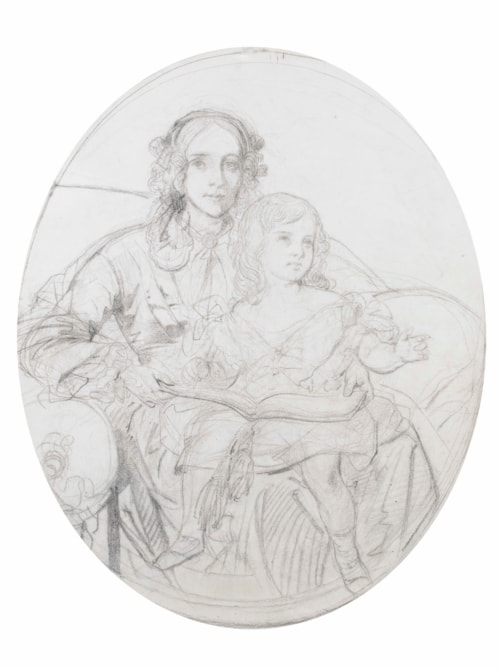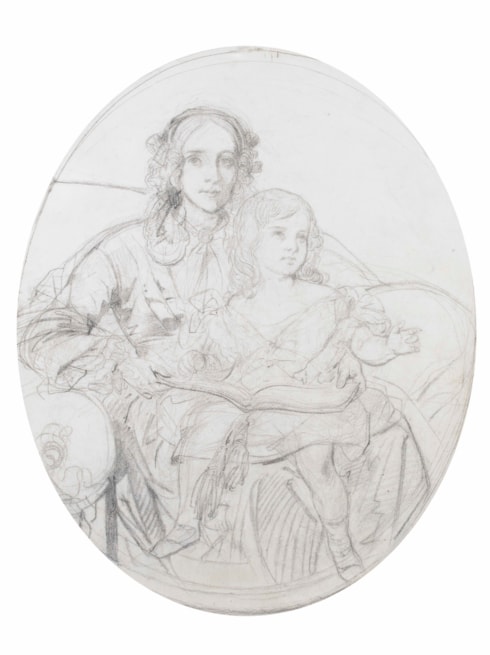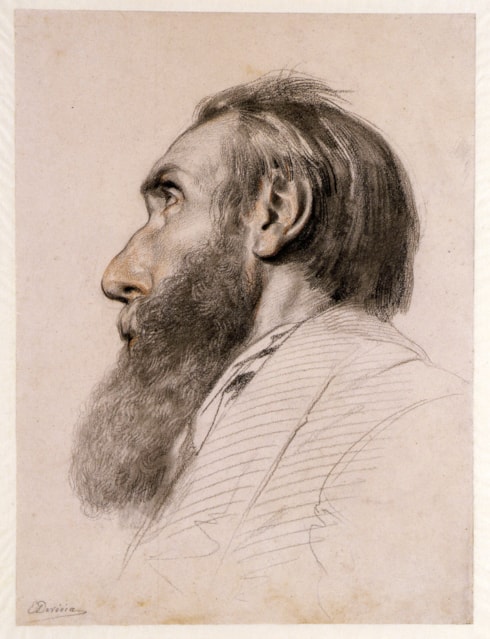
Eugène DEVÉRIA
Paris 1805 - Pau 1865
Biography
A student of Anne-Louis Girodet-Trioson and Guillaume Lethière, Eugène Devéria was, from early in his career, regarded as one of the leading Romantic painters in France. He achieved public success at the age of twenty-two, when his painting of The Birth of Henri IV was exhibited to considerable acclaim at his Salon debut in 1827. Richly coloured and ambitious in scale, and indebted to the example of Rubens and Veronese, the painting served to establish Devéria’s reputation. Its success led the following year to a commission to paint the ceiling of one of the rooms in the Louvre; by far the youngest of the five artists chosen for the task, the others being Martin Drolling, Jean Alaux, Victor Schnetz and François-Joseph Heim. Devéria’s mural was completed in 1833 and exhibited at the Salon the following year.
By this time he was enjoying an official career and had received numerous public commissions, unlike his older brother and fellow-painter Achille, whose influence on him was considerable. In 1836 he painted a scene of The Oath of Louis-Philippe for the Musée de l’Histoire de France at Versailles. Between 1838 and 1840 he decorated the walls and vault of a chapel in the cathedral of Notre-Dame-des-Doms in Avignon; his most significant work as a religious painter. This was to be his last significant public commission, since not long afterwards he retired to Pau, in the Pyrenees, where he lived in seclusion until the end of his life. (He also converted to Calvinism in 1843, causing a split with Achille.) The 1840’s and 1850’s found Devéria painting scenes from medieval English history, Shakespeare’s plays and Romantic novels; works far removed from contemporary developments in the art world of Paris. His last years were spent in relative obscurity, and he worked mainly as a portrait, genre and landscape painter.



